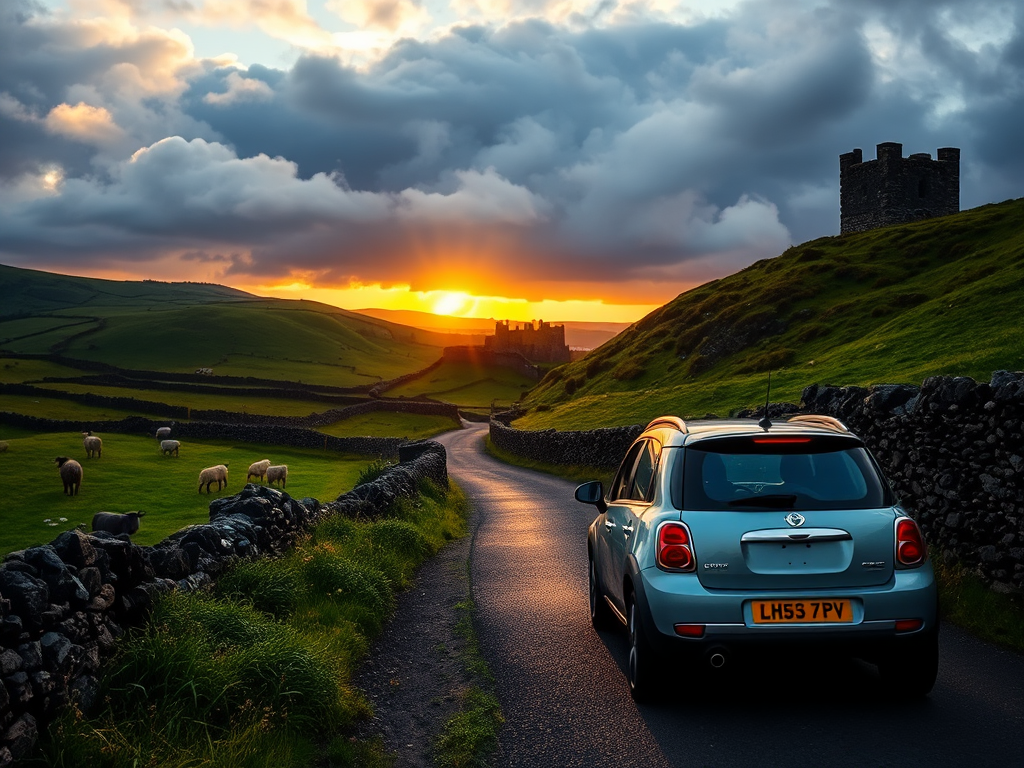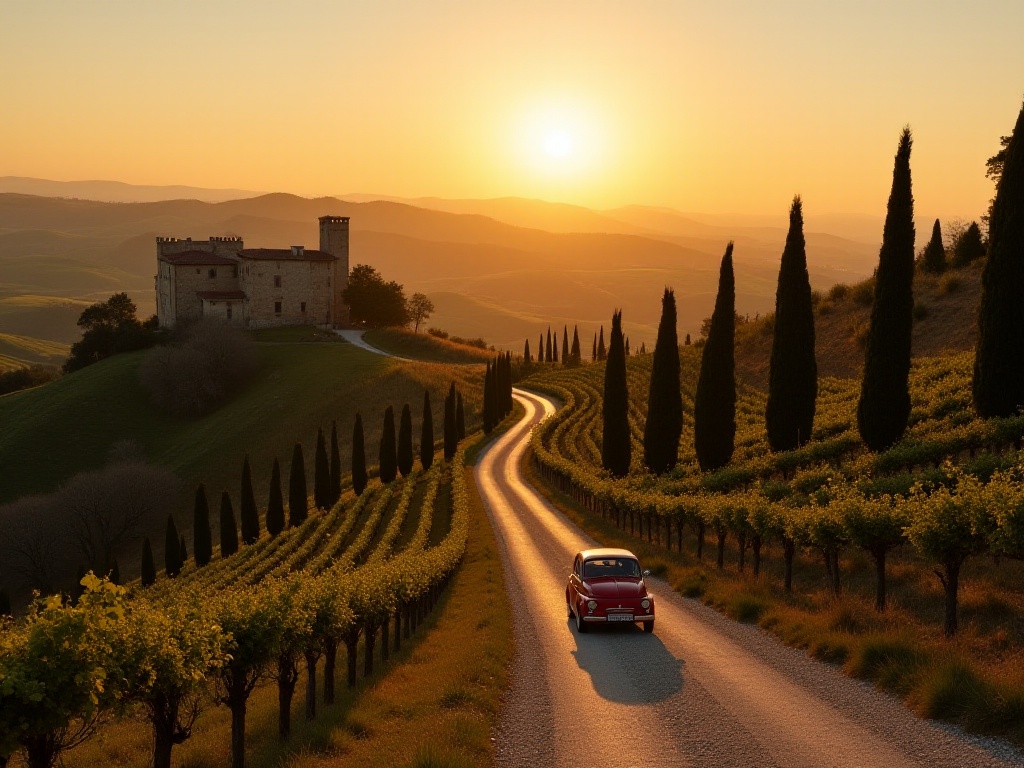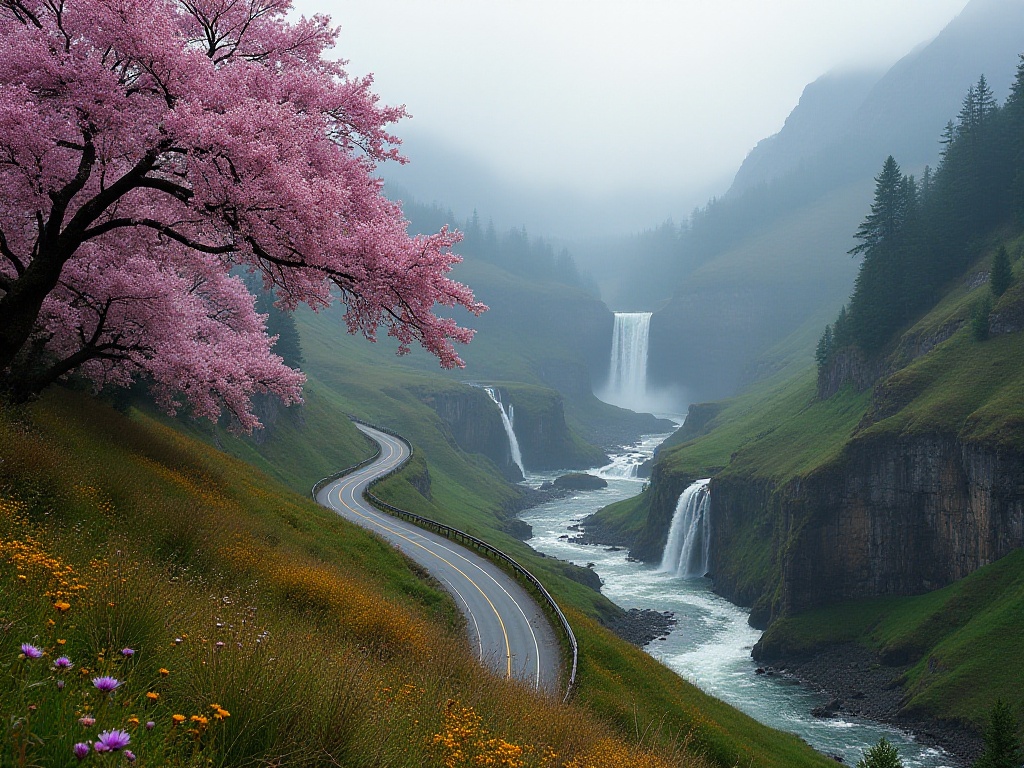Origin
Have you ever dreamed of taking a spontaneous American road trip? As a travel blogger who has been around the world, I must say that among all the driving routes, Route 66 is definitely the most legendary. Known as the "Mother Road," this highway stretches from Chicago to Los Angeles, crossing 8 states with a total length of nearly 4,000 kilometers, carrying countless collective memories of Americans.
History
Route 66 was officially completed and opened to traffic in 1926, becoming a road of hope for hundreds of thousands of Americans migrating to California during the Great Depression. At that time, thousands of farmers left the dust bowl-ravaged Midwest, traveling along this road to California in search of a new life. Nobel laureate John Steinbeck depicted this highway as "the escape route of the American people" in his work "The Grapes of Wrath."
Preparation
To fully experience Route 66, it's recommended to set aside at least two weeks. Based on my experience, the best time to travel is during spring (March-May) or fall (September-November), when the weather is pleasant, avoiding both extreme heat and cold.
Regarding car rental, I suggest choosing a comfortable mid-size SUV. Why? Because this type of vehicle ensures comfort for long-distance driving while handling poor road conditions on older sections. I once suffered quite a bit in New Mexico's gravel road sections because I chose a small sedan.
Insurance is another important consideration. Besides basic Collision Damage Waiver (CDW), I strongly recommend purchasing additional liability and personal accident insurance. In the United States, medical costs are astonishingly high, and comprehensive insurance can give you peace of mind during your journey.
Route
Starting from Chicago, Route 66 passes through Illinois, Missouri, Kansas, Oklahoma, Texas, New Mexico, Arizona, and finally reaches California. Each state has its unique geographical landscape and cultural characteristics.
The Illinois section focuses on experiencing Midwest small-town charm. Here, you can see well-preserved gas stations, motels, and roadside diners from the last century. The Abraham Lincoln Presidential Library in Springfield is definitely worth visiting, housing numerous historical artifacts about this great president.
St. Louis in Missouri is a must-visit. The city's landmark - the Gateway Arch, standing 192 meters tall, is known as the "Gateway to the West." Here, I recommend trying the local famous barbecue ribs, with St. Louis-style barbecuing methods dating back to the 19th century.
Passing through Kansas, you'll find yourself in the vast American Great Plains. The sunsets here are particularly spectacular, with orange-red skies complementing the golden wheat fields, forming a perfect natural canvas.
Oklahoma is an important origin of American Indian culture. In Oklahoma City, the National Cowboy and Western Heritage Museum showcases rich Native American cultural heritage. According to statistics, the museum receives over 200,000 visitors annually.
Amarillo, Texas is famous for its iconic "Cadillac Ranch." This unique art installation features 10 old Cadillacs buried nose-down in the ground, attracting over 300,000 visitors annually.
Albuquerque, New Mexico is the filming location of the famous TV series "Breaking Bad." The Indian Market here is held three times a year, showcasing unique Native American crafts. Statistics show that daily visitor flow during the market can reach 50,000 people.
The Arizona section's most notable attraction is the Grand Canyon National Park. As one of the world's seven natural wonders, the Grand Canyon receives over 6 million visitors annually. I recommend visiting the Desert View point at sunrise; watching the sun paint the canyon red is truly unforgettable.
The final California section extends from the Needles Desert to the Pacific Coast. Santa Monica Pier is considered the end of Route 66, receiving over 8 million visitors annually. Standing on the pier looking out at the Pacific Ocean, you'll feel the sense of achievement from completing this journey.
Accommodation
Accommodation options along the route are plentiful, ranging from vintage motels to luxury resorts. I especially recommend experiencing a few nights in historically significant motels, such as the Wigwam Motel in Arizona, which has maintained its last-century decor style since its establishment in 1936.
Regarding accommodation costs, economy motels range from $60-100 per night, mid-range hotels from $100-200 per night, and luxury hotels above $200. Prices may increase by about 30% during peak season, so it's recommended to book at least one month in advance.
Food
The cuisine along Route 66 is a cross-regional feast. From Chicago's deep-dish pizza to St. Louis's barbecue ribs, to New Mexican cuisine in New Mexico, each region has its unique food culture.
Worth mentioning are the roadside diners that often hold surprises. From my experience, local restaurants rated above 4.5 stars on Google often provide memorable dining experiences. A regular meal costs between $15-30 per person, while high-end restaurants may exceed $50.
Budget
The complete Route 66 road trip costs break down as follows: - Car rental: about $700-1000 (two weeks) - Fuel: about $400-500 (depending on gas prices) - Accommodation: $1400-2800 (depending on standards) - Food: $600-1200 - Attraction tickets: about $300-500 - Insurance: $200-300 - Other expenses: $300-500
Total budget ranges from $4000-7000, depending on your travel style and comfort requirements. If traveling in a group of four, per person cost can be controlled between $1000-1800.
Tips
Based on my multiple road trip experiences, here are some special recommendations:
-
Downloading offline maps is essential. Although most areas along Route 66 have mobile coverage, signals might be unstable in some remote areas. I recommend using Google Maps' offline map feature, which allows you to download map data for specific areas.
-
Refuel early. In some sections, the distance between gas stations might exceed 100 kilometers. My experience is to start looking for gas stations when the tank is still half full.
-
Prepare emergency items. Besides a basic first aid kit, recommended items include:
- Flashlight and spare batteries
- Plenty of drinking water (at least 2 liters per person)
- High-energy snacks
- Car emergency tool kit
-
Warm blanket
-
Plan time reasonably. I've seen too many travelers trying to complete the entire journey in one week, missing many amazing attractions. Recommendations:
- Don't drive more than 400 kilometers per day
- Reserve enough time for unexpected situations
- Plan more than one day's stay at important attractions
Reflections
Completing Route 66 is not just finishing a road trip, but experiencing a spiritual journey through American history. On this road, you can see the marks of America's transition from an agricultural to an industrial society, feel the hardships people endured during the Great Depression, and understand the essence of the American Dream.
I remember meeting an elderly person in a small Arizona town who had run a restaurant for over 40 years. He told me: "Route 66 is not just a road, it's a symbol of Americans pursuing their dreams." This statement deeply resonated with me. On this road, every sign, every town, every restaurant tells its own story.
Have you planned a similar road trip? Or do you have any special yearnings for Route 66? Feel free to share your thoughts and experiences in the comments. If you need more detailed itinerary suggestions, let me know, and I'll be happy to provide more advice.







